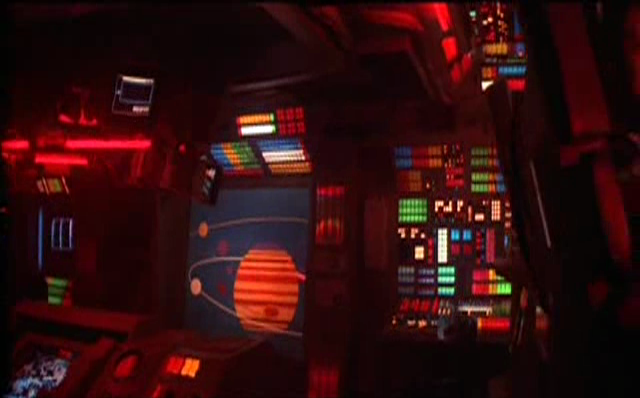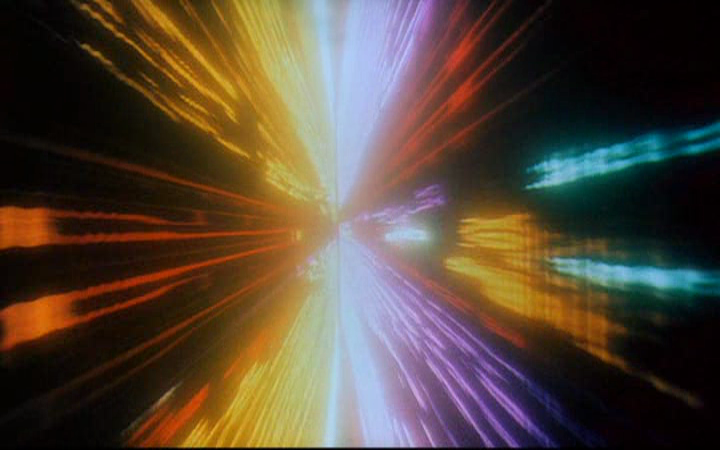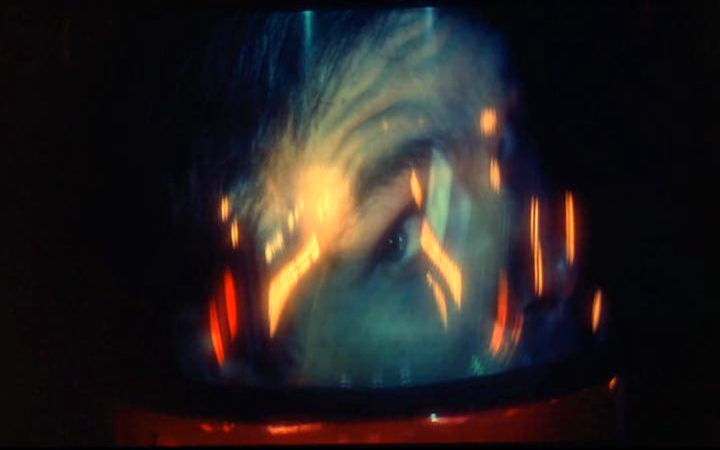-
#3 – 2010: The Year we Make Contact
2010: The Year We Make Contact (1984)
Film review #3
Dir. Peter Hyams
The sequel to the classic 2001: A Space Odyssey. If you’re looking for more of the same artistic flare, you may be suprised.
2001 and 2010 are a bit like chalk and cheese, but both of them are equally enjoyable, just probably in different ways. While 2001 has a very artistic direction and production, touching on the notions of the sublime and the numinous with it’s ambitious set design and large budget, 2010 is a more traditional cinematic venture with more a more traditional script and soundtrack.
2010 elaborates more on the concepts introduced in 2001, one of the most fundamental parts of the story is the continuation of the Cold War between the United States and Russia, which was mentioned briefly (one line?) in the original movie becomes one of the main aspects of the story, with the U.S. and Russia on the verge of all out war. Being produced in 1984, when the Cold War was still ongoing, there was an obvious prediction that it would continue into 2001 and 2010 as depicted in their respective movies (Though the novels they were based on were published much earlier).
The sets in 2010 are much darker and murkier than the 2001 designs. Maybe this is due to the ship being mainly set on board a Soviet ship The Alexei Leonov). The controls and monitors of the ship are adorned with Russian letters and characters. When the film switches to the shots of the Discovery (The U.S. Ship) the white, sterile environments could not be any more different. The re-creation of the ship from 2001 is very accurate, though only a few sets of the original ship was recreated probably due to budget constraints.
The Discovery still looks more advanced than the Alexei Leonov, possibly because the Soviet ship is full of a lot of standard sci-fi set aesthetics, such as flashing buttons, and monitors with 80s computer graphics, which show their age when watched now (It’s pretty hard to be convinced that this ship could make it to Jupiter…), though the Discovery has aged much better, as it still looks futuristic and advanced, possibly because 2001 was produced to be as scientifically accurate as possible, whereas 2010 seems to take a few “scientific liberties” to up the action-drama element of the film.
I like that 2010 doesn’t answer all the questions 2001 raises, and where it does, it seems to answer them with more questions, for example, 2001 did not show any aliens on-screen on the advice of Carl Sagan, who famously said that aliens would look so different to us, that trying to create that one screen could never do the truth justice. In the end. HAL becomes a hero of sorts, David Bowman from the original appears, but his appearance seems to suggest he has become a higher life-form of sorts, and the monoliths, shown in the first movie to be somehow responsible for advances in the evolution of man, now makes another impact on the evolution of man, stopping the Cold War and heralding a new era for the Earth. Never explaining what the monoliths are, just what they are capable of. As well as this, new life is just beginning on Jupiter’s moon Europa, who may one day join with humanity the way the east and west have now joined together on Earth.
So overall, another interesting and enjoyable movie. Completely different genre to it’s predecessor, but still tells the story it begins well, and taking on the issues that were at the forefront of the agenda when it was produced. It does not try to emulate 2001’s groundbreaking style (Which would be a folly as far as I’m concerned), but tells it’s own story and leaves a poignant message about the mysteries of our universe.
Finally, should the title of the film be changed to The Year We Made Contact, now 2010 is in the past? Or should it still be make since making contact with aliens is still something we have yet to do? Hmm…
-
#2 – 2001: A Space Odyssey
2001: A Space Odyssey (1968)
Film review #2
dir. Stanley Kubrick
Stanley Kubrick’s landmark film that really set the bar for set design and technical wizardry in the genre of science-fiction. Based on the short story by Arthur C.Clarke entitled “The Sentinel”, the film is split into four main sections. The first, entitled “The dawn of Man”, is set millions of years in the past, and follows a tribe of ape men, who stumble one of the mysterious black monoliths, and soon after figure out how to use tools and weapons. The next act is set en route to, and on the moon in the year 2001, where another monolith has been uncovered. It emits a signal which kills everyone at the site, which leads onto the third act, in which a crew (Lead by Dr. David Bowman) is tracing the signal the monolith sent to Jupiter. The final act entitled “Jupiter and beyond the infinite” is ambiguous as its title, with Bowman arriving at Jupiter, and encountering a large monolith which takes him on a journey far beyond human experience…
A lot of the images and scenes in 2001 have become culturally famous and recognisable outside of the film. The Discovery’s computer, HAL 9000 is one of the most recognised characters that is basically just a computer. The image of the monoliths is also one that has transcended its origins in the movie and is recognisable in other guises; reparring and being referenced in numerous TV show and such over the years. The “match-cut” of the skeletal bone to the space station which joins the first and second acts, as well as the final image of the fetus overlooking the Earth are also famous and recognisable scenes from the film.
Kubrick’s films are well known for their ambition and technical accuracy. The models of the spaceship and the accounts of artificial gravity were all carefully worked out and portrayed as accurately as possible. Since man had not even landed on the moon when this movie was released, I imagine there was a lot of guesswork done, based on mankind’s very limited experience in space. For the most part though, it seems to have aged extremely well with time, and these sets and technical props are futuristic, yet still have that sense of attainability. The only exception to this, is the obvious fact that 2001 has been and gone, and it looked nothing like what this film portrayed (For a start, the cold war ended twenty years ago), still, it could eventually happen a little in our future…
The use of sound and special effects has a very “artistic” direction in this film. The soundtrack is composed of a number of classical pieces, and accompanied by a lot of silence. Dialogue is also only used minimally throughout the movie. Because of this, it deviates from the traditional scripts of cinema being action-orientated, and 2001 develops along a very unique artistic direction, touching along aspects of the sublime and the numerous, especially during the final act. The special effects and design are well very well put together, so much so I think it would still look relevant if it were released today, as the movie as a whole has aged very well.
Overall, 2001 is a key movie in the development of science-fiction in cinema, and has a lot of cultural significance. On top of this, it is also a joy to watch. It is something one has to watch with an open mind, since comparing it to other films would be futile as it is truly a unique experience.A lot of the images and scenes in 2001 have become culturally famous and recognisable outside of the film. The Discovery’s computer, HAL 9000 is one of the most recognised characters that is basically just a computer. The image of the monoliths is also one that has transcended its origins in the movie and is recognisable in other guises as it is referenced across TV shows and other mediums. The “match-cut” of the skeletal bone to the space station which joins the first and second acts, as well as the final image of the fetus overlooking the Earth are also famous and recognisable scenes from the film.
-
#1 – Planet of the Vampires
Planet of the Vampires (1965)
Film review #1
Director: Mario Bava
A classic sci-fi movie which apparently was a large inspiration for future sci-fi movies such as Ridley Scott’s Alien (1980). The imagined ship designs and architecture is busy, yet plain: created with large angular panels of stainless steel and sequences of blinking lights and buttons. The lustre and sheen of the steel sets still belies a sense of darkness, which compliments the horror genre of the movie. Compare these to the set of the “alien” ship about halfway into the movie, where the architecture is very different, adorned with curved controls, lights and circular doors and hallways.
The designs and props are somewhat humourously cheap to look at today. The floor of the space ship looks like it’s made of concrete, so someone could not be bothered to conceal the studio floor no doubt. Also the guns are more like glorified lighters, with added sound effects when they are sparked to turn the flames that come out into lasers which never make any contact with anyone…
The twist at the end I saw coming. Throughout the film, the word “Earth” is never mentioned: Always “Home” or “our planet”, hinted subtly that the humans who crash land on the planet Aura aren’t actually from Earth, though at the end of the film, the aliens of Aura steal the humans bodies and cannot reach their unnamed home planet, instead having to stop at a “primitive” planet who still “build buildings out of stone and iron” (aka Earth)
The whole design screams 1960’s. The cheap sets, painted backdrops instead of on-location shots, the wooden acting and script (The voices were dubbed into English since it was originally made in Italian)…
As a final note, why is it called Planet of the Vampires anyway? THERE ARE NO VAMPIRES IN THE MOVIE. AT ALL. The antagonists are beings who steal the human’s bodies so they’re more like parasites. Planet of the Parasites would be more appropriate. I supposed it was originally made in Italian under the name Terrore Nello Spazio, Which I’m pretty sure does not have Vampires anywhere in the title…



























